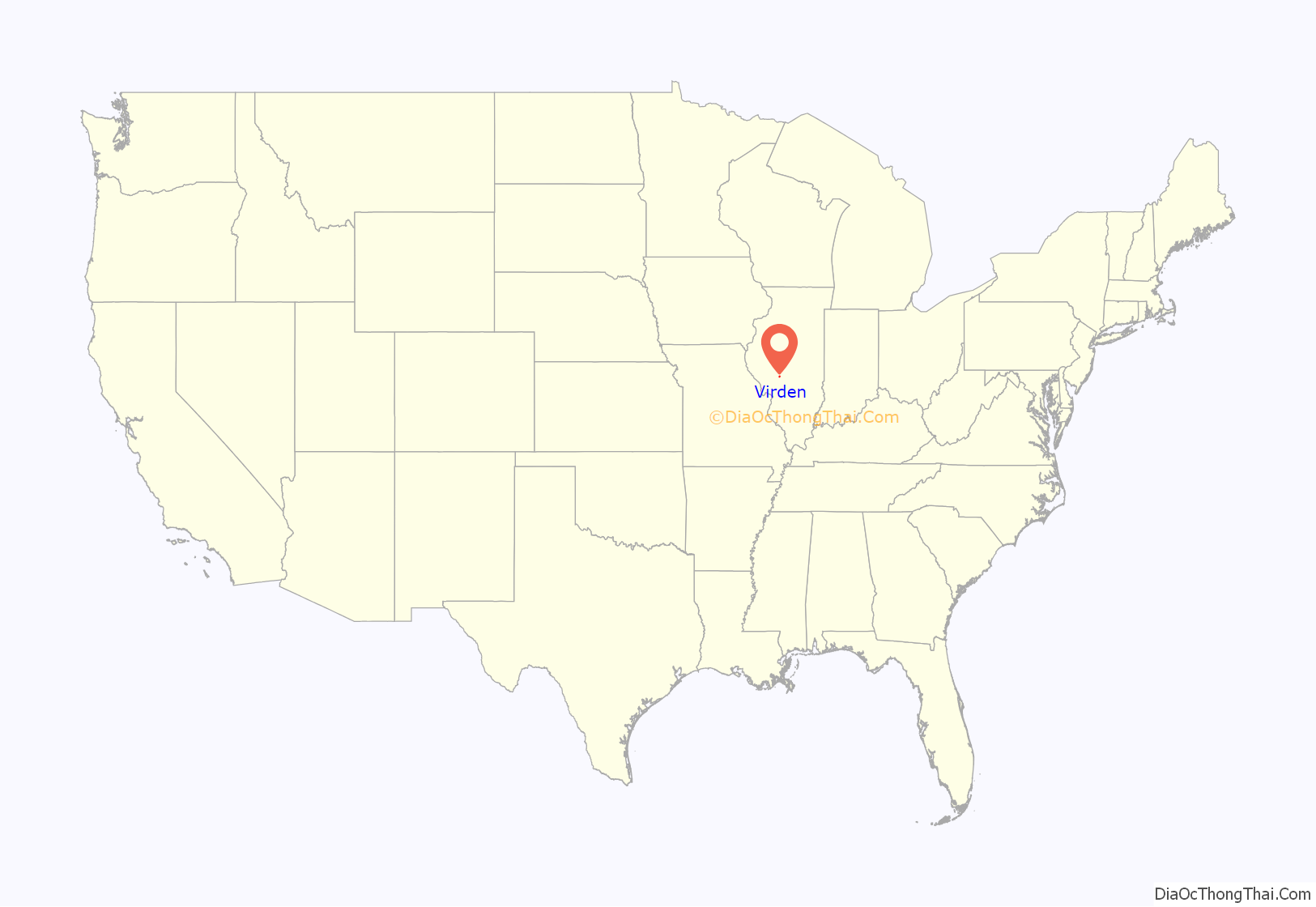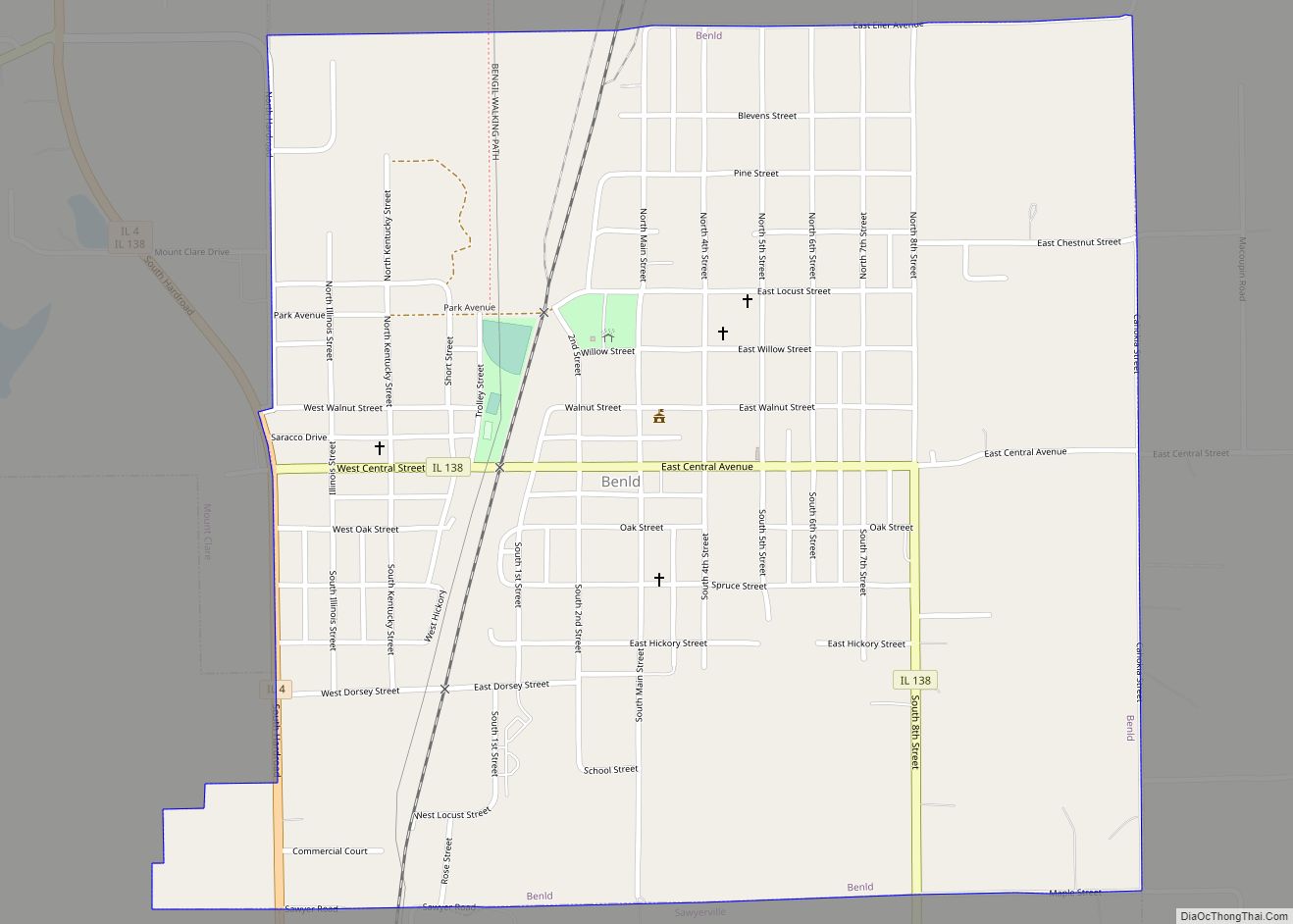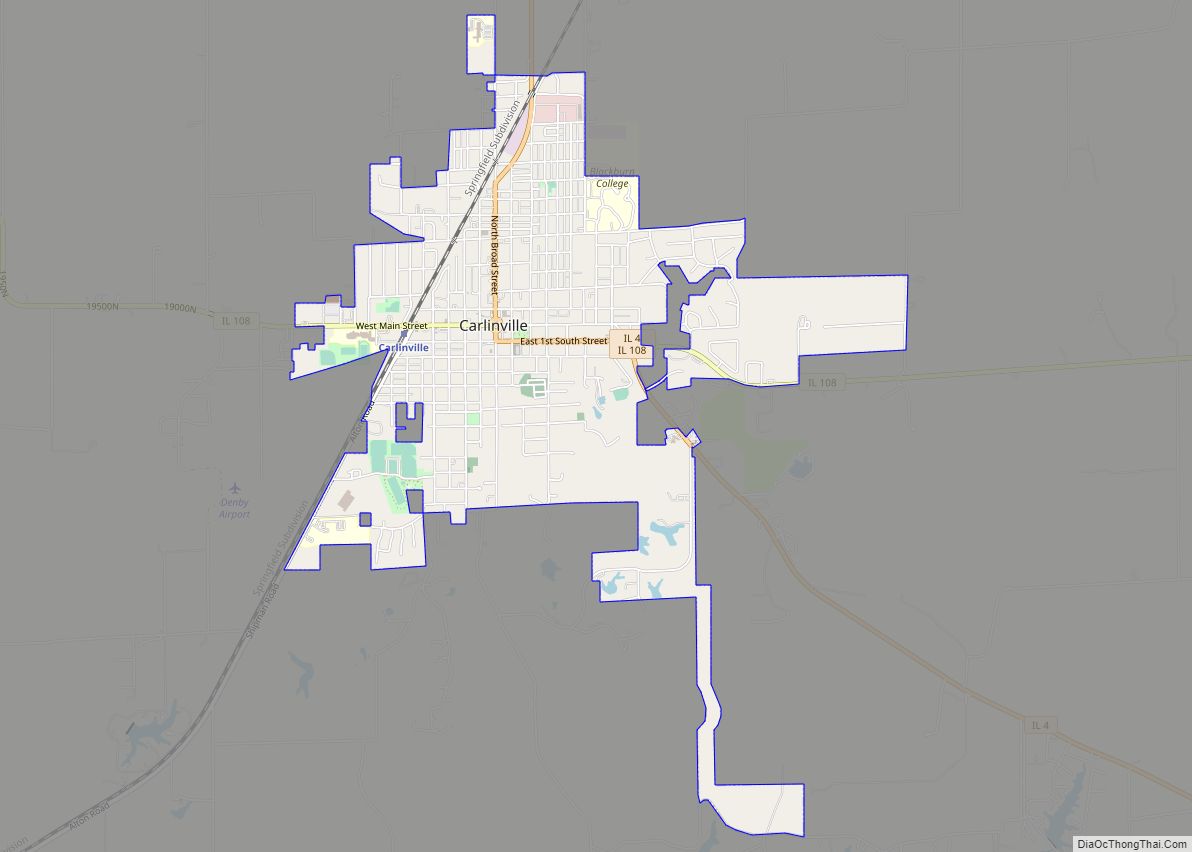Virden is a city in Macoupin and Sangamon counties in the U.S. state of Illinois. The population was 3,231 at the 2020 census.
The Macoupin County portion of Virden is part of the St. Louis, Missouri–Illinois Metropolitan Statistical Area, while the Sangamon County portion is part of the Springfield Metropolitan Statistical Area.
Virden was the scene of an 1898 coal miners’ strike, during which Mary Harris “Mother” Jones played a major role.
| Name: | Virden city |
|---|---|
| LSAD Code: | 25 |
| LSAD Description: | city (suffix) |
| State: | Illinois |
| County: | Macoupin County, Sangamon County |
| Elevation: | 676 ft (206 m) |
| Total Area: | 1.89 sq mi (4.89 km²) |
| Land Area: | 1.89 sq mi (4.89 km²) |
| Water Area: | 0.00 sq mi (0.00 km²) |
| Total Population: | 3,231 |
| Population Density: | 1,710.43/sq mi (660.43/km²) |
| ZIP code: | 62690 |
| Area code: | 217 |
| FIPS code: | 1778149 |
| GNISfeature ID: | 2397150 |
| Website: | virden.municipalimpact.com |
Online Interactive Map
Click on ![]() to view map in "full screen" mode.
to view map in "full screen" mode.
Virden location map. Where is Virden city?
History
Virden sits atop a large seam of coal. After the 1850s, when the Chicago and Alton Railroad was completed, it became possible to mine Virden coal and ship it long distances for a profit. Throughout the second half of the 1800s, Virden prospered and grew as a coal-mining town.
A bitter coal strike broke out in 1898. The Chicago-Virden Coal Company, fearing loss of key business in Chicago, refused to allow its Virden mines to be unionized, nor would it pay the nonunionized miners union-scale wages. Instead, the coal company built a timber stockade around its mine head, adjoining the railroad tracks, and hired African-Americans from Southern states as coal miners. The Chicago-Virden Company knew that African-Americans, who were attempting to escape Jim Crow labor conditions, would not request union-scale wages. Instead, the company promised to pay their new workers by the ton. The new miners were promised only 30 cents per ton of coal mined.
The appearance of the African-American miners infuriated the strikers. They were motivated by racism, by labor solidarity, and by the desire to create decent lives for their own families. Some of the striking coal miners were themselves African-American, and black coal miners who were union members in good standing were apparently accepted by their unionized white comrades. However, this acceptance did not extend to strikebreakers.
Battle of Virden
On October 12, 1898, a northbound train, loaded with potential strikebreaking miners, pulled into Virden and stopped on the tracks just outside the minehead stockade. The mine manager and train operator, knowing there would be trouble, had reinforced the train with a troop of security guards, armed with Winchester rifles. It soon became clear that the security guards had been either ordered, or allowed, to shoot to kill. As the strikers attempted to surround the train, the guards opened fire.
As a gun battle broke out in and around the strikebreakers’ train, there were dead and wounded on both sides. Of the thirteen dead, six were security guards. Furthermore, had the strikers won the battle, their intentions toward the Alabama strikebreakers were not friendly. After twenty minutes of firing on both sides, the train’s engineer accepted defeat and the engine and part of the train pulled away from the minehead and continued northward to Springfield.
A monument in the Virden town square commemorates the coal strike of 1898 and the battle of October 12 that was its bitter end. The monument contains a large bronze bas-relief that includes the names of those killed, and a copy of a mendacious recruiting handbill distributed by the Chicago-Virden Company in Birmingham, Alabama, to recruit the African-American miners. The body of the bas-relief is made of symbolic representations of the Chicago & Alton tracks and the assault on the strikers. The guards are shown pointing their Winchesters at the strikers and their families. Atop the bas-relief is a bronze portrait of Mary Harris Jones (“Mother Jones”), who is buried in nearby Mount Olive.
Virden Road Map
Virden city Satellite Map
Geography
Most of the city lies in the northeast corner of Macoupin County, with a small portion extending north into Sangamon County. In the 2000 census, 3,378 of the city’s 3,488 residents (96.8%) lived in Macoupin County and 110 (3.2%) lived in Sangamon County.
Illinois Route 4 passes through the city as Springfield Street, leading southwest 18 miles (29 km) to Carlinville, the Macoupin county seat, and northeast 22 miles (35 km) to Springfield, the state capital.
According to the U.S. Census Bureau, Virden has a total area of 1.89 square miles (4.90 km), all land. The city drains west to Sugar Creek and east to its tributary Brush Creek. Both creeks flow to the northeast, with Sugar Creek joining the Sangamon River, a tributary of the Illinois River, east of Springfield.
See also
Map of Illinois State and its subdivision:- Adams
- Alexander
- Bond
- Boone
- Brown
- Bureau
- Calhoun
- Carroll
- Cass
- Champaign
- Christian
- Clark
- Clay
- Clinton
- Coles
- Cook
- Crawford
- Cumberland
- De Kalb
- De Witt
- Douglas
- Dupage
- Edgar
- Edwards
- Effingham
- Fayette
- Ford
- Franklin
- Fulton
- Gallatin
- Greene
- Grundy
- Hamilton
- Hancock
- Hardin
- Henderson
- Henry
- Iroquois
- Jackson
- Jasper
- Jefferson
- Jersey
- Jo Daviess
- Johnson
- Kane
- Kankakee
- Kendall
- Knox
- La Salle
- Lake
- Lake Michigan
- Lawrence
- Lee
- Livingston
- Logan
- Macon
- Macoupin
- Madison
- Marion
- Marshall
- Mason
- Massac
- McDonough
- McHenry
- McLean
- Menard
- Mercer
- Monroe
- Montgomery
- Morgan
- Moultrie
- Ogle
- Peoria
- Perry
- Piatt
- Pike
- Pope
- Pulaski
- Putnam
- Randolph
- Richland
- Rock Island
- Saint Clair
- Saline
- Sangamon
- Schuyler
- Scott
- Shelby
- Stark
- Stephenson
- Tazewell
- Union
- Vermilion
- Wabash
- Warren
- Washington
- Wayne
- White
- Whiteside
- Will
- Williamson
- Winnebago
- Woodford
- Alabama
- Alaska
- Arizona
- Arkansas
- California
- Colorado
- Connecticut
- Delaware
- District of Columbia
- Florida
- Georgia
- Hawaii
- Idaho
- Illinois
- Indiana
- Iowa
- Kansas
- Kentucky
- Louisiana
- Maine
- Maryland
- Massachusetts
- Michigan
- Minnesota
- Mississippi
- Missouri
- Montana
- Nebraska
- Nevada
- New Hampshire
- New Jersey
- New Mexico
- New York
- North Carolina
- North Dakota
- Ohio
- Oklahoma
- Oregon
- Pennsylvania
- Rhode Island
- South Carolina
- South Dakota
- Tennessee
- Texas
- Utah
- Vermont
- Virginia
- Washington
- West Virginia
- Wisconsin
- Wyoming














